At Tenaga Nasional Berhad (TNB), we believe that true progress is not achieved at the expense of the environment - but in harmony with it. Guided by our ESG principles, we aim to approach infrastructure development in a way that supports environmental care and social responsibility.
Traditionally, large-scale infrastructure has been seen as a threat to natural ecosystems. TNB is contributing to a shift in this narrative. By incorporating sustainable practices across various stages of our operations, from planning and construction to maintenance and innovation, we strive to show that development and conservation can go hand in hand.
Rivers, forests, and wildlife habitats are not just environmental assets - they are vital components of a healthy and resilient ecosystem. With careful planning and responsible implementation, it is possible to protect these sensitive areas while delivering essential infrastructure.
By adopting sustainable practices, we can safeguard water quality, maintain biodiversity, and strengthen climate resilience. These measures not only protect endangered species and ecosystems, but also ensure continued access to clean water and support for local communities.
In one example involving the construction of overhead transmission lines near the Chiling River (Sungai Chiling) in northeast Selangor state, TNB was able to make sure that the biodiversity of the water body was not only protected but its native fish populations encouraged to flourish.
Safeguarding River Ecosystems While Meeting Energy Demands
Located between the colourful town of Kuala Kubu Bahru and the former colonial retreat of Fraser’s Hill, Chiling River is more than a scenic river for visiting tourists.
The river is actually a critical freshwater sanctuary that shelters sensitive fish species such as the ikan kelah (Tor tambroides) and the ikan tengas (Neolissochilus soroides) that inhabit this river.
In recent years, when TNB undertook the construction of a new electricity overhead transmission lines through an ecologically rich zone, the project was guided by a strong commitment to local biodiversity and the protection of endemic species.
To ensure a thorough understanding of the river’s delicate ecosystem, TNB launched the Chiling River Fish Monitoring, Nursing, and Rehabilitation Program, a comprehensive programme focused on the conservation and rehabilitation of aquatic life and surrounding habitats. This included efforts to nurture, monitor, and support the recovery of existing aquatic species, as well as restore the health of the riverbanks and adjacent ecosystems.
These initiatives were designed with long-term ecological resilience in mind, aligning with both national and international conservation frameworks. Domestically, TNB’s approach supported the objectives of Malaysia’s National Policy on Biological Diversity 2016–2025. Internationally, it followed the Kunming-Montreal Global Biodiversity Framework as a guiding reference.
Ultimately, these considerations helped ensure that environmental disruption was minimised and that the project proceeded with meaningful mitigation measures—balancing critical infrastructure development with a deep respect for the natural environment.
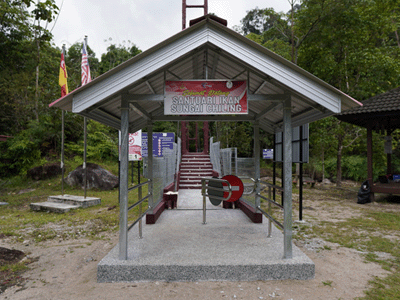

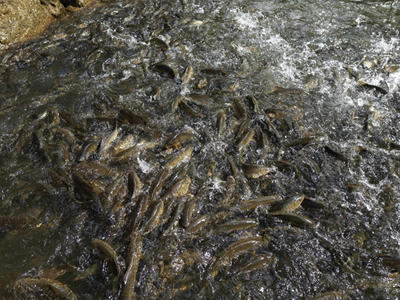
The Strategy and Implementation: A Holistic Approach to Conservation
TNB's initiative is built on a foundation of scientific accuracy and best management practices, ensuring that the overhead transmission line projects not only minimises environmental disruption but also actively contributes to the restoration and enhancement of the Chiling River ecosystem. The program is structured around five key strategies:
-
Fish NursingFish nursing techniques were introduced to help the local aquatic species thrive, with natural oil palm fruit placed in the river to mimic natural food sources, and attract fish populations. The fish were also hand-fed with pellets, taming them and reducing their flight response during monitoring. This led to less stress among fish and higher survival rates within protected zones in the sanctuary.
-
Fish Growth AssessmentThe fish populations within these protected zones were meticulously studied, with measurements of their length and weight recorded to evaluate the overall health of the ecosystem and identify potential environmental stressors.
-
Underwater Fish Condition MonitoringAdvanced camera systems were strategically installed in the river to facilitate real-time monitoring of the fish. This enables experts to closely observe the species' health, behavior, and population density.
-
Aquatic Health MonitoringThe team was also able to track the river's water quality, making a note of characteristics such as dissolved oxygen, pH, temperature, turbidity, and sedimentation levels. Different readings would be marked according to their respective levels.
-
River RehabilitationBeyond the monitoring, TNB also took into account the actual rehabilitation of the river ecosystem, with several physical efforts. These included the strategic restocking of fish, the stabilisation of riverbanks, the replanting of riparian vegetation such as native merbau trees (Intsia palembanica) and the adoption of best practices at construction sites.
The programme was also supportive of the United Nations' Sustainable Development Goals (SDG), most notably:

Rehabilitation of river systems that contribute to carbon regulation and ecosystem resilience.

Restoration of fish populations and protection of freshwater ecosystems.
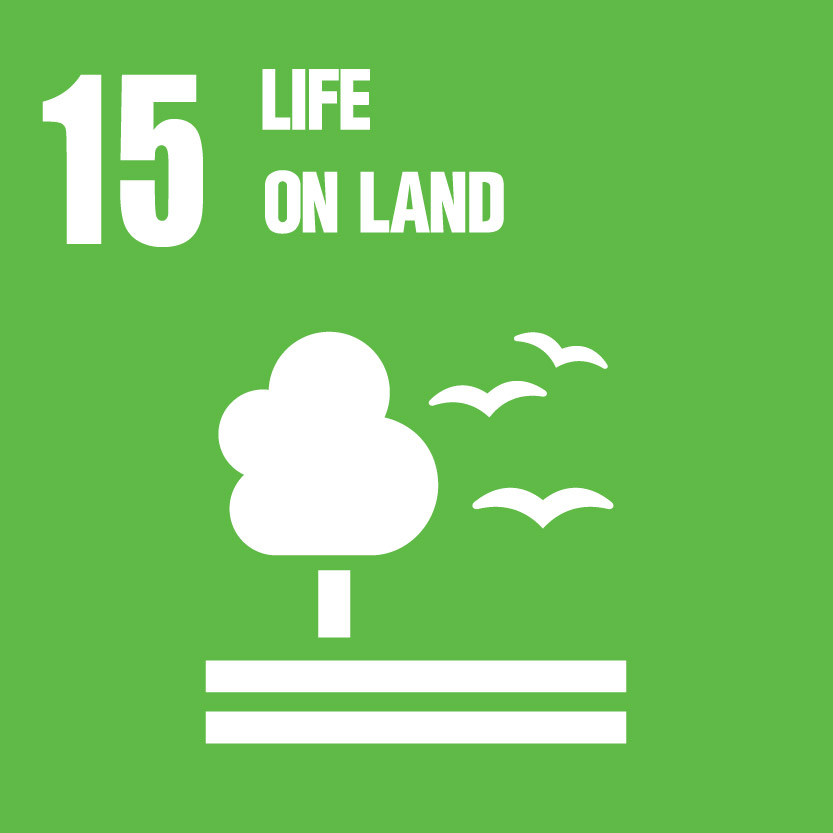
Strengthened conservation practices in riparian and adjacent terrestrial zones.
The Collaborative Conservation through Stakeholder Engagement
The Chiling River Fish Monitoring, Nursing, and Rehabilitation Program is a collaborative conservation initiative aimed at enhancing fish populations and preserving biodiversity within Selangor's sole designated fish sanctuary. With a strong emphasis on multi-stakeholder involvement, the programme prioritises long-term ecological sustainability through active engagement with government agencies, local communities, and biodiversity experts.
A structured stakeholder engagement strategy was implemented from the outset, involving regular site visits, meetings, and briefings to ensure transparency and shared accountability. Community outreach played a central role, with locals participating in conservation activities such as fish feeding and habitat restoration, strengthening their connection to the ecosystem and encouraging stewardship.
Technical support from the Department of Fisheries (DOF) and the Selangor State Forestry Department, along with academic partnerships, ensured that best practices were followed in fish nursing and population monitoring. The programme’s impact was tracked through measurable indicators includ-ing fish biometric data, stakeholder touchpoints, and visible improvements in fish health and population size.
Within just three months, the fish population rose by 93%, with improved fish condition metrics, signaling a thriving aquatic environment. The initiative has been formally recognised by regulatory bodies such as the Department of Environment (DOE) and Department of Fisheries (DOF) for aligning with state conservation goals and promoting ecotourism. The Chiling River programme stands as a model for successful, science-based, community-driven conservation.
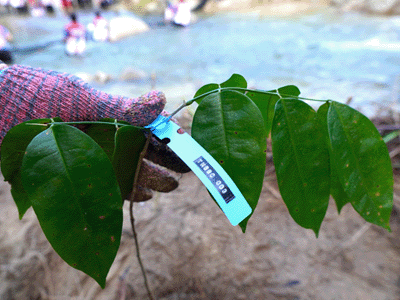
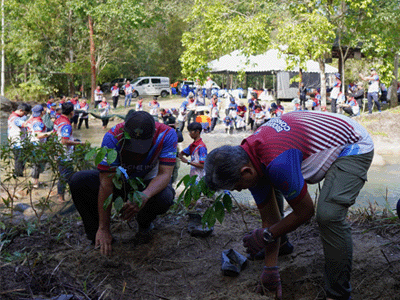
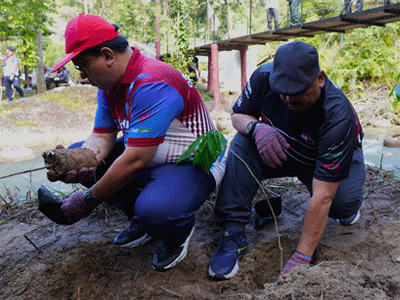
Validating Impact Through Measurable Outcomes
TNB's Fish Monitoring, Nursing, and Rehabilitation Program has yielded significant positive impacts on the Chiling River ecosystem, as evidenced by measurable outcomes:
- 93% increase in fish population, indicating habitat recovery and improved survival rates.
- 46.2% increase in fish weight, suggesting better food availability and environmental conditions.
- Improved fish health indices, with fewer deformities and reduced disease prevalence.
- Water quality improvement trends, with optimized dissolved oxygen levels and reduced turbidity.
This also meant that the river was improved in its ecological resilience, with conservation efforts transforming the water body into a long-term environmental asset.
The fish nursing, monitoring, and rehabilitation program in Chiling River provides specific, measurable, and long-term benefits to overhead transmission line projects and ESG objectives. By minimizing environmental disruption, fostering community support, reducing costs, and contributing to biodiversity conservation, the program ensures that the infrastructure development that is both sustainable and socially responsible. This approach not only mitigates the ecological impact of overhead transmission line projects in sensitive areas but also aligns with global sustainability standards, reinforcing TNB’s commitment to environmental stewardship and sustainable development.